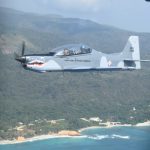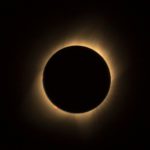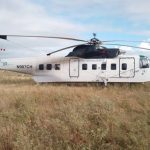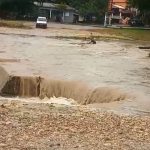Spring whale watching tops Dominican Republic’s diversity list

Dominican Republic, March 15, 2016 /PRNewswire/– With more than 25 percent of the country made up of protected lush landand pristine coastal areas, Dominican Republic has seen steadyinterest in its ecotourism offerings in recent years. The spring season becomesparticularly popular with nature-minded travelers with the arrival of3,000-5,000 humpback whales, which breed and calve in the country’s lushnortheastern region.
"Dominican Republic’s natural beauty makes it aunique and special place to visit – we take great pride in preserving theecological health of the country," said Magaly Toribio, MarketingAdvisor for the Dominican Republic Ministry of Tourism. "Tourists willfind that the list of things to do is plentiful. Our world-renownedwhale-watching opportunities, for example, are only one of many attractionsthat fulfill the desires of guests wanting to fully immerse themselves in our environment,wildlife and culture."
Since 1962, the country has worked tirelessly to establishpowerful partnerships with environmental leaders like The Nature Conservancy,the United Nations and The Smithsonian to protect and preserve the beauty andstability of the nine distinct ecological zones that make DominicanRepublic the most bio-diverse country in the Caribbean.
Just like the thousands of guests that visit DominicanRepublic every year, humpback whales migrate to Samaná Bay in search ofwarmer temperatures. In fact, up to 5,000 of the gentle creatures visit the bayannually, where they can comfortably mate and nurse newborn calves. The whaleseason lasts from mid-January until late March when the whales return back totheir normal habitats – until then, there’s no better time or place toexperience and watch the largest mammal on earth from just a few hundred feetaway.
There’s much more for nature lovers to explore in thecountry. Enjoy these top 10 activities and hotspots, sorted by region:
Northeast Coast
Whale-watchingin Samaná Bay
Samanáis widely recognized as a tranquil, relaxing destination and is defined byunspoiled beaches, rich blue waters, and lush green hills. The Marine MammalSanctuary of the Dominican Republic was established in 1986 andsurrounds more than 200 mi2 (518 km2) of the SamanáPeninsula. It is considered one of the first whale sanctuaries to exist andprovides a perfect place for the animals – that can weight up to 40 tons – tomate and take care of their young. Tours offered for guests to observe thehumpback whales and listen to their songs at close range take great care not todisturb the creatures’ home.
Los Haitises National Park
Creatingthe southernmost border of Samaná Bay, Los Haitises National Park is a remoteprotected area composed of lush conical hills, sinkholes, mangroves, andcaverns. This verdant humid forest contains a number of rare bird and mammalspecies, many endemic to the island, with some caverns still displaying nativeTaíno Indian pictoglyphs within them. Boat tours of the islets and cavernhiking tours are available in this popular natural attraction, but the numberof tourists allowed to enter annually is limited to protect the area.
Salto El Limón
Locatedabout 12 miles outside of the town of Samaná, El Limón waterfall impresses witha 130-foot (40 meter) drop from the top of the Sierra Samaná. Visitors can makethe 1.5-mile (2.5 kilometer) trek either by foot or by horseback and can cooloff by dipping into the water under the majestic waterfall once they arrive.
North Coast
Estero-HondoMarine Mammal Sanctuary
Whalesaren’t the only sea animals you can admire in Dominican Republic. TheEstero-Hondo Marine Mammal Sanctuary in the Puerto Plata province is aprotected marine area that stretches over 30 mi2 (48 km2)and is the largest home for manatí (manatee) in the country. The area is alsohome to a variety of birds and flowers, all of which are protected. Tours areavailable seven days a week.
Central
Saltode Jimenoa
Enjoya spectacular waterfall with a 200-foot (60 meter) drop in Jarabacoa, about anhour south of Santiago de los Caballeros in the center of the island.The spray from the water plunging down is known to project magnificent rainbowson the surrounding rock. In fact, the waterfall is beautiful enough to merit itbeing in an opening scene of Jurassic Park!
Climb Pico Duarte
Stretchingover the skies at over 10,000 feet (3,048 meters), Pico Duarte is thehighest peak not only in Dominican Republic, but also in the Caribbean asa whole. Usually accessed through the town of Jarabacoa, it is part of theCentral Cordillera Mountain Range in the Santiago province and attractsthousands of hikers, campers and mountain bikers each year. March up itsbeautiful trails or experience wild white water rafting on the Yaque del NorteRiver – the longest in the Caribbean – and explore some of thecountry’s most sensational views and experiences.
Southeast Region
ExploreCaves and Springs
LosTres Ojos, in English "The Three Eyes," is a national park in SantoDomingo that highlights a series of gorgeous open limestone caves andfresh springs. Further east in San Pedro de Macorís, guests can explore theCueva de las Maravillas, or "Cave of The Miracles," which is anotherseries of spectacular caves – some of which have native Taíno Indian drawingsstill visible on their inner walls.
Catamaran to Saona Island
SaonaIsland is just a short distance from the mainland and can be convenientlyreached with speedy Catamaran boats. As a protected natural reserve, the islandboasts pure white sand and magnificently beautiful, clear water. It is thecountry’s largest offshore island, stretching 42 mi2 (68 km2)and is home to 112 species of birds, turtles, sharks, bottlenose dolphins,whales, and manatees.
Southwest Region
CruiseLake Enriquillo
Thismassive salt lake between the provinces of Bahoruco and Independencia spans anarea of 145 mi² (375 km²) and falls at 148 feet (45 meters) below sea level –making it both the largest lake and the lowest elevation of the Caribbean.Surrounded by towering mountains, Lake Enriquillo is home to a variety of floraand fauna – iguanas, crocodiles and flamingos as well as many different speciesof cactus call the lake and its dry forests home. Boat tours of the lake areavailable to ecotourists curious about this hidden and largely untouched cornerof Dominican Republic.
Country-Wide
ExploreUnder the Sea
Thecountry is not only home to over 1,000 miles of pristine beaches – it’s alsosurrounded by the crystal-clear Caribbean Sea offering endless snorkeling anddiving opportunities. Hobby and professional divers consistently rank DominicanRepublic as a top spot for outstanding underwater attractions andbeautiful sea life, including shipwrecks, schools of colorful fish, underwaterart, ancient caves and vibrant coral reefs.
For more information on ecotourism attractions and eventsin the Dominican Republic, visit www.GoDominicanRepublic.com.
About Dominican Republic
Surrounded by the Atlantic Ocean on the north and the Caribbean Sea on thesouth, our lush tropical and paradisiacal country boasts nearly 1,000 miles(1,609 km) of coastline, 250 miles (402 km) of the world’s top beaches,magnificent resorts and hotels, and a variety of sports, recreation andentertainment options. Here you can dance to the pulse pounding thrill of themerengue, renew in our luxurious and diverse accommodations, explore ancientrelics of centuries past, delight in delicious Dominican gastronomy or enjoyecotourism adventures in our magnificent national parks, mountain ranges, riversand beaches.
Known for our warm and hospitable people, DominicanRepublic is a destination like no other, featuring astounding nature,intriguing history and rich cultural experiences like music, art and festivals,plus uniquely Dominican specialties such as cigars, rum, chocolate, coffee,merengue, amber and larimar.
Dominican Republic features the best beaches,fascinating history and culture, and is a chosen escape for celebrities,couples and families alike. Visit Dominican Republic Ministry of Tourism’sofficial website at: www.GoDominicanRepublic.com.
















